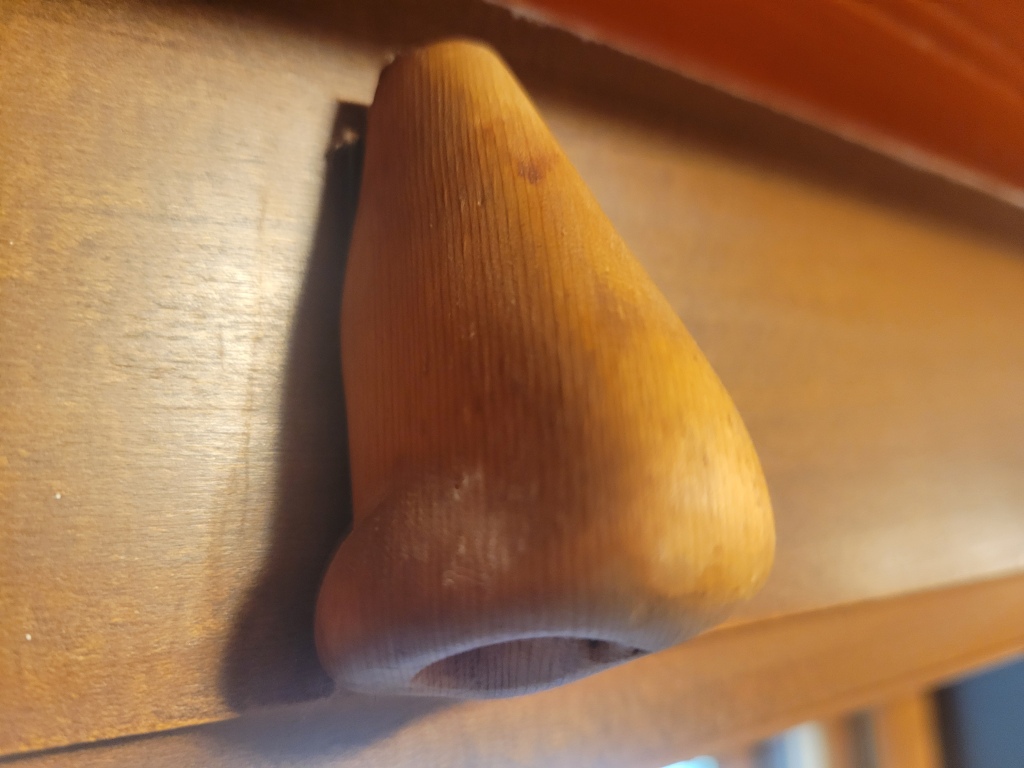
My dentist’s office plays nonstop HGTV in the waiting room and treatment rooms. You may have access to this channel or be familiar with the type of show that I only see on (too-frequent!) dental occasions. From my limited exposure there always seem be two presenters, both with blazingly over-whitened teeth and amphetamine-like energy levels, who host home makeovers in shows that should all be titled What Throwing Money At A House Can Do.
These hosts wield a crowbar or carry materials, narrating as they pretend to work, while the real crew behind them gets the job done. Even though I’ve only seen samples of such shows, I’m already weary of the word pop as used in “pop of color” when they wallpaper the ceiling or “now that wall really pops” when they cover gorgeous old bricks with paint.
What confuses me more comes near the close of each show, when before photos are contrasted with after photos. It seems strange how much more attention is given to frippery than structural or functional changes. I particularly wonder about the designer’s insistence on filling the home with new furniture, new art on the walls, new dishes on the table, new baubles on the shelves. Sometimes there’s a bespoke touch, like a whimsical picture of the family dog framed over the sofa or a giant letters hanging on the wall with whatever word the homeowners said was their personal motto.
Meanwhile I’m wondering happened to the rocking chair and family photos from the before pictures. Who played the piano the designer decided didn’t fit the repurposed space? Where are all the toys from messy bedrooms of actual kids? Where are the books now that the old shelves have been ripped out? Where’s the antique umbrella stand that held ostrich feathers from a family vacation? During the big reveal, the home’s occupants almost always shriek something like “I can’t believe this is the same place” or “I don’t recognize a thing.” Is that a positive?
It’s not like we become better versions of ourselves when we wear the newest fashions or drive the flashiest car or use the latest tech. Of course that’s what our consumer culture has been telling us from the time we were toddlers—spending creates happiness! Yet, more materialistic people, from childhood on, are not happier. According to research cited in The High Price of Materialism by Tim Kasser, people who hold materialistic values are more likely to suffer from a whole dumpster load of problems. This includes aggressive behavior, insecurity, depression, low self-esteem, narcissism, even physical maladies. And when people place high value on material goals, they’re prone to have trouble with interpersonal relationships and intimacy. Materialism is also related to less independent thinking and lower value placed on being “true to oneself.”
In fact, people living in small-scale societies considered, by industrial world standards, to be living in subsistence poverty are among the happiest in the world, expressing greater life satisfaction than Finns or Danes who media reports tell us are the happiest people in the world.
I look around at my resoundingly not-fashionable home and yes, I’d like to replace the peeling linoleum and the falling-apart kitchen cupboards. I’d like to finally get the molding nailed in place instead of stacked in the basement. But I can’t imagine tossing out the memories embedded in the furniture, the art, the books, the dishes, even the Pyrex measuring cup so old its markings are no longer visible.
The things that mean something to us are uniquely embedded in our memories.
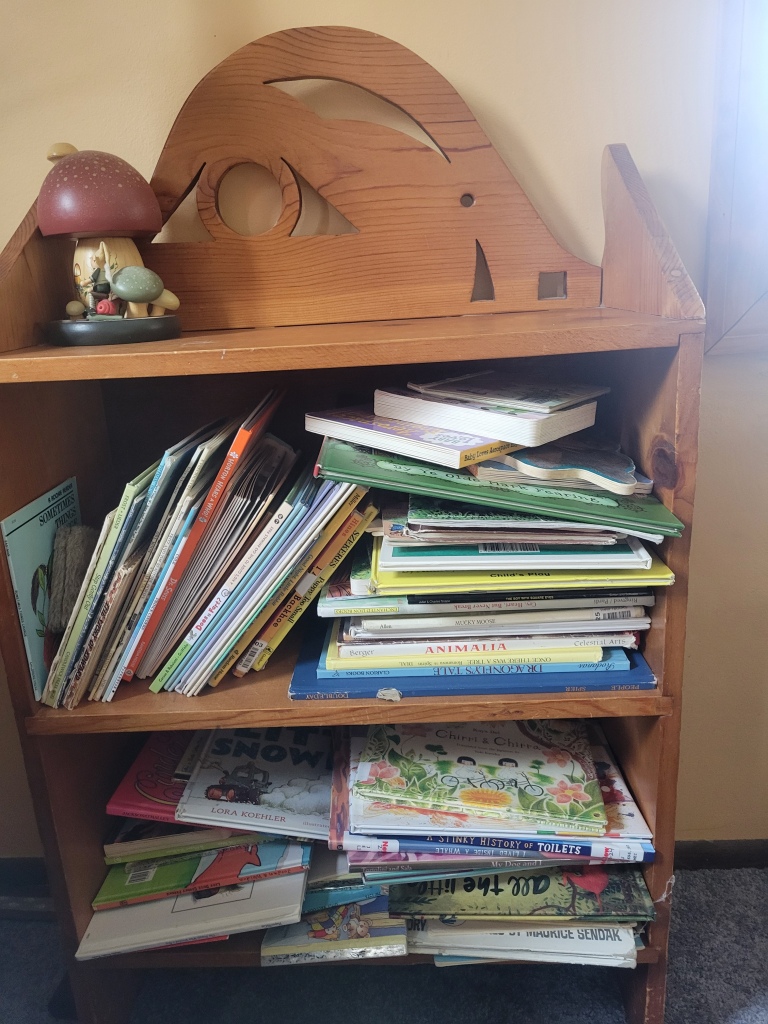
These shelves my sister designed and made have long been used to hold a gloriously messy assortment of kid books.
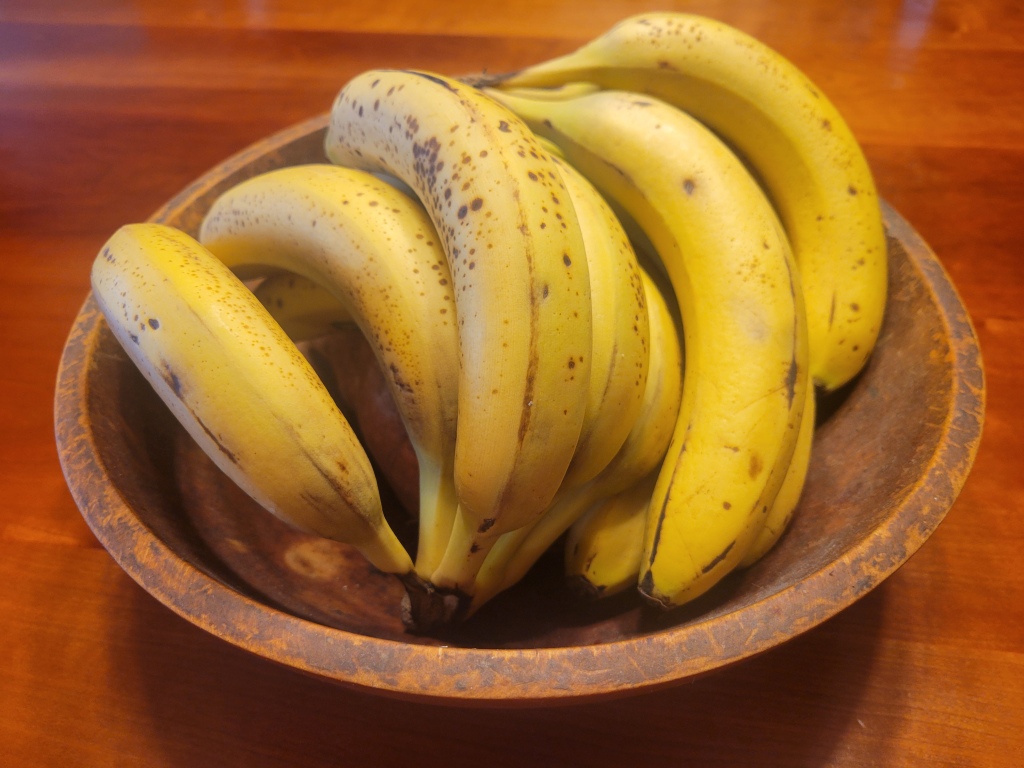
This ancient wooden bowl came to us from generations back. It has always held fruit on the counter.
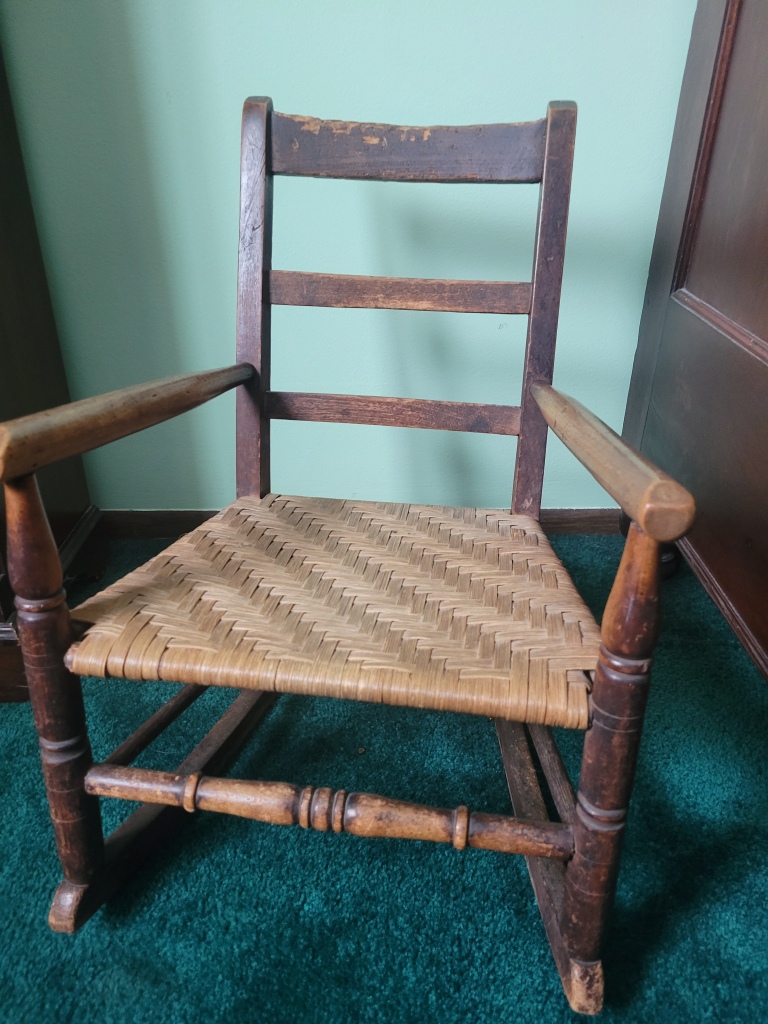
This is the tiny rocking chair my dad and his sibs rocked on, played with, and teethed on. It was used by countless cousins till it came to us.
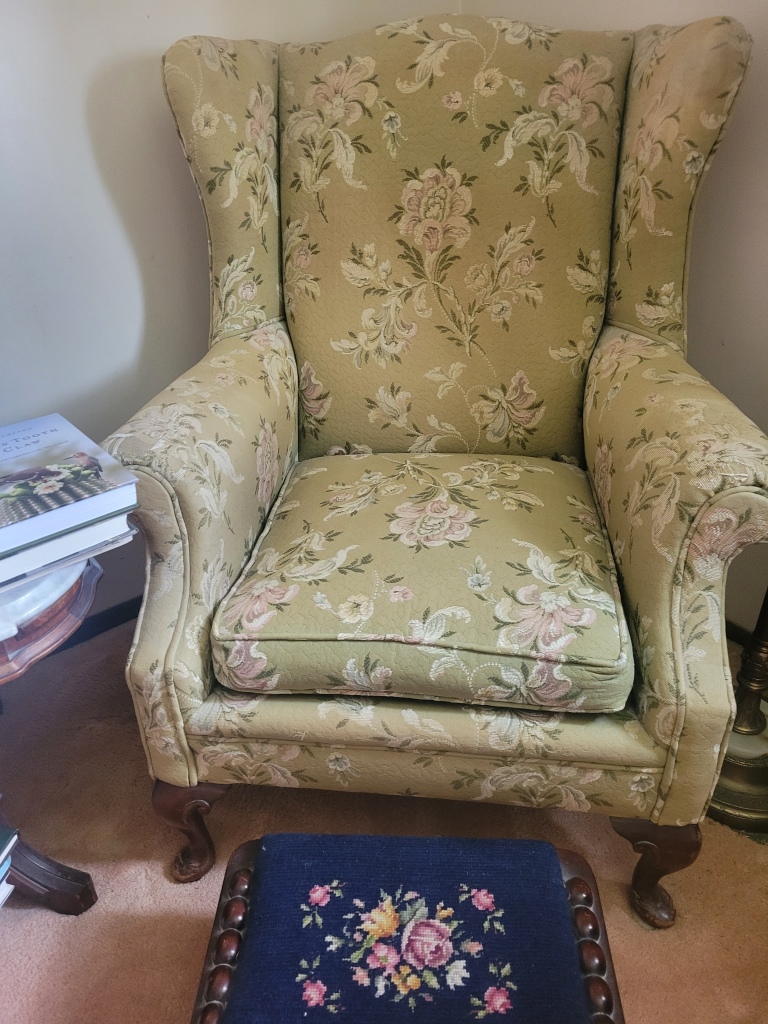
This admittedly worn but sturdy chair belonged to my Great-Aunt Mildred, which means it’s at least 70 or 80 years old. It probably needs to be recovered, but I don’t mind it as it is. Paired with a floor lamp from my parent’s home and footstool with crewel work by my grandmother and this corner of my bedroom is perfect for reading into the middle of the night when insomnia has me in its grip.
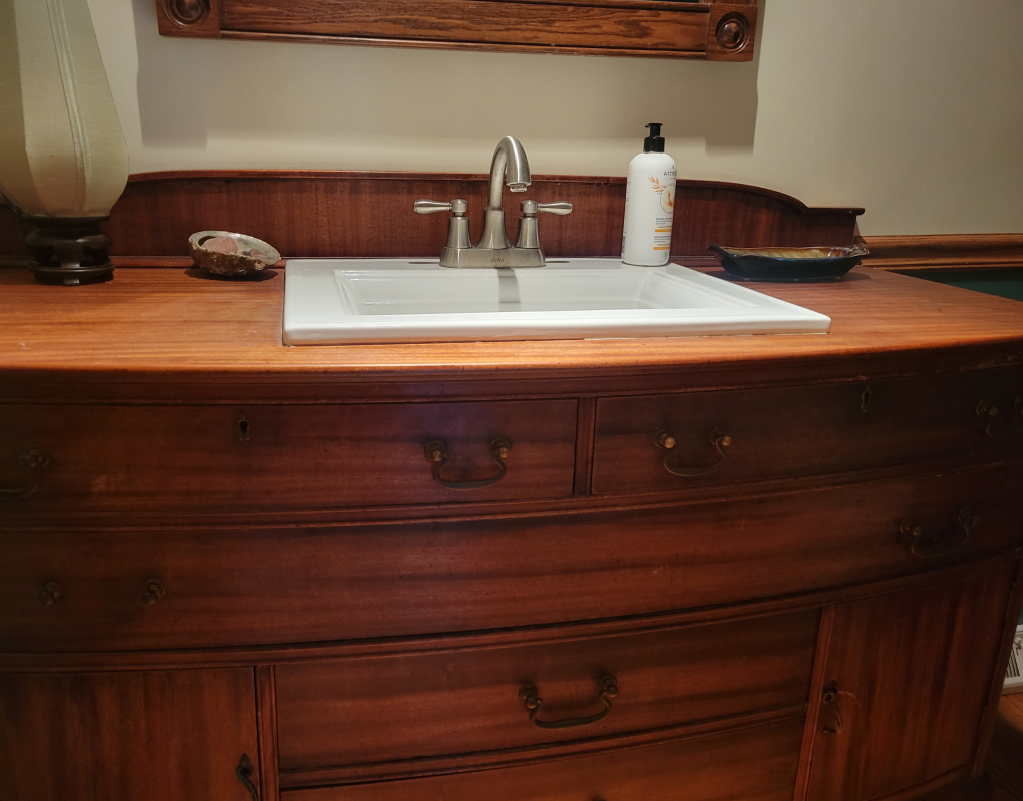
My husband made this substantial bathroom vanity from an old chest of drawers.
And art, oh art, every piece of art we have has a story. I’ll share only a few pics.
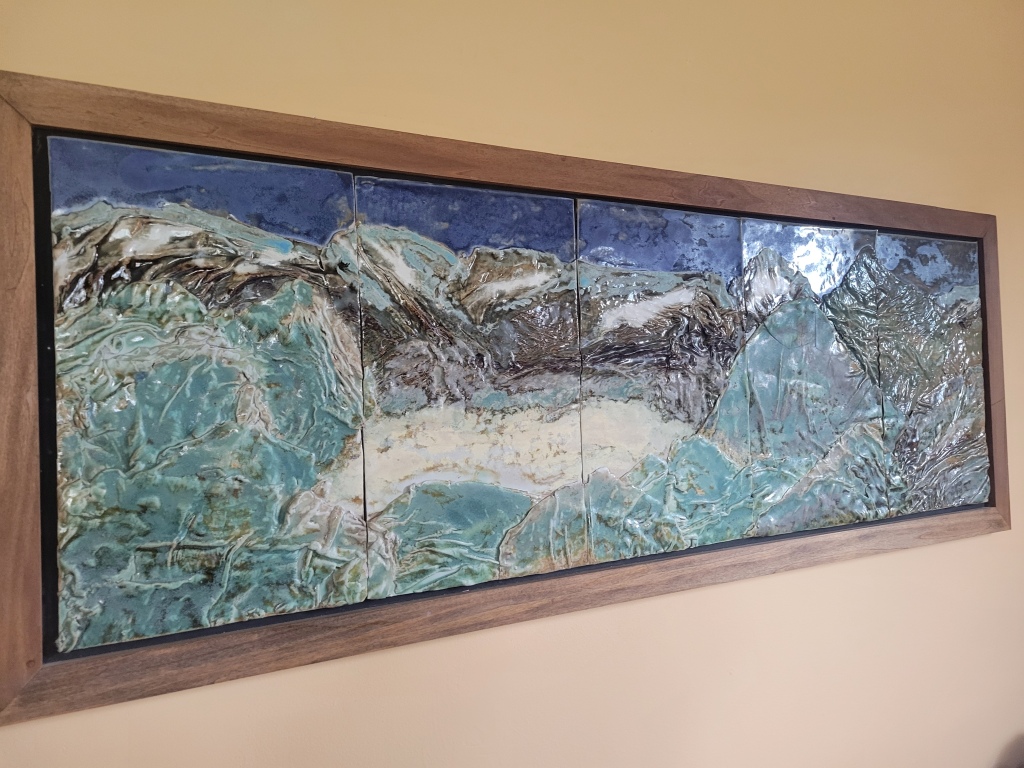
This gorgeous piece is by our friend, ceramics artist Stephen Bures. Years ago we put in our first and only claim on our homeowner’s insurance after our roof sustained storm damage. We bought this piece with the settlement and fixed the roof ourselves. #priorities
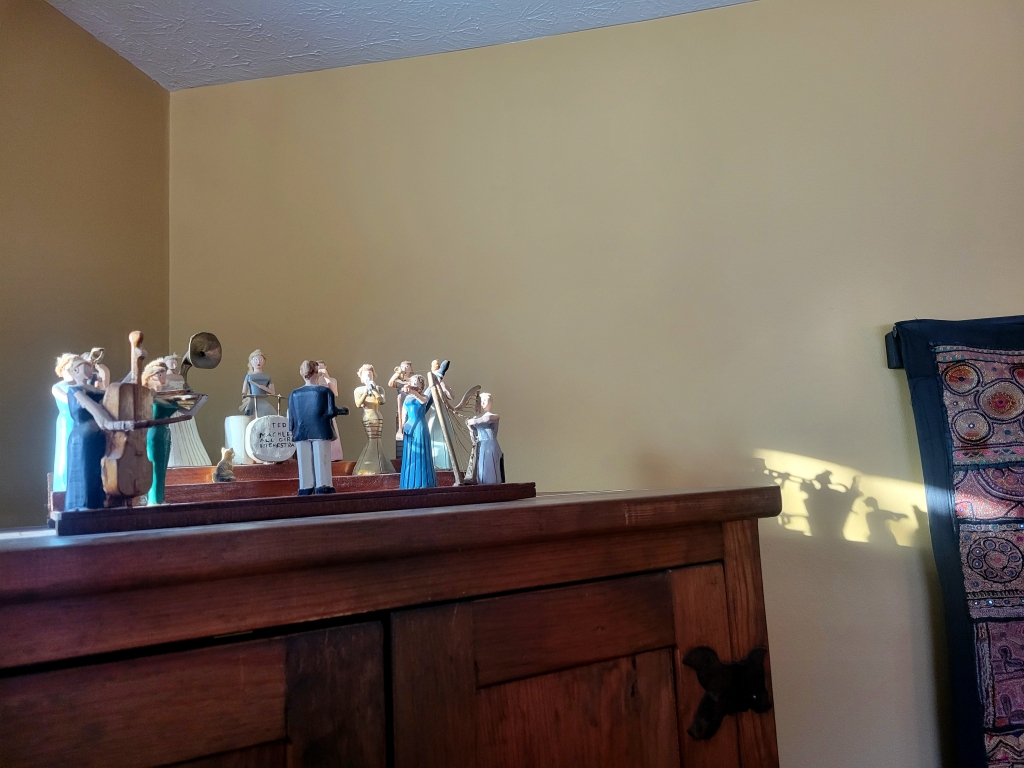
This unsigned work was made by a resident of the Medina County Home. He carved the figures from lumber cut-offs, used cotton left over from medication bottles for the hair, and painted it with materials from the home’s activities department. It’s a depiction of a music group his brother formed during the Great Depression. The drum reads TED MACHLES ALL-GIRL ORCHESTRA. He was tickled that we considered it art.

This sweet little wombat was made by my daughter when she was around 11 years old.
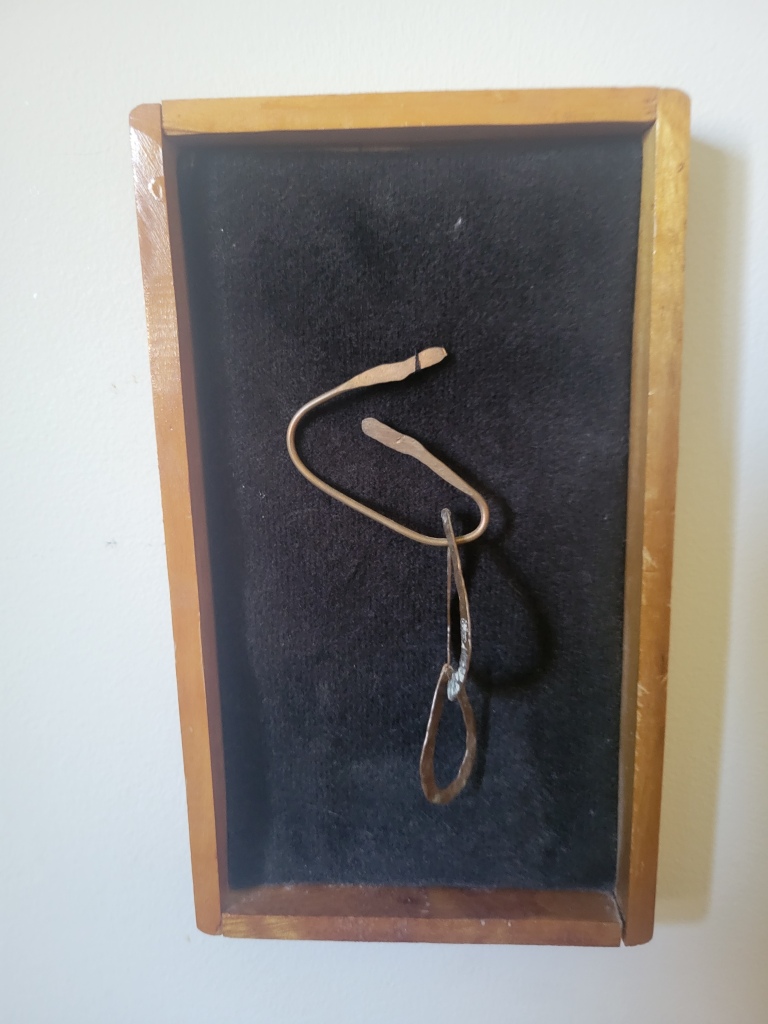
And this sculptural piece was made by my middle son when he was 8 or 9 by hammering and mounting copper wire. (I have a much more elaborate copper mobile he made hanging from the ceiling but I’m not photographing it due to its heavy decor of dust.)
There’s too much to show you, but I’ll close by telling you about the spectacular nose at the start of this piece. It was carved by my brother when he was 13 or 14. It has always hung in my kitchen and is one of the things I’d save if there was a house fire.
In a world of crass materialism, appreciating what we have isn’t just about frugality or simplicity. It’s about quiet satisfaction found in meaning and memory. Things made with “wakened hands,” as D.H. Lawrence wrote, “are awake with transferred touch, and go on glowing for long years.”
